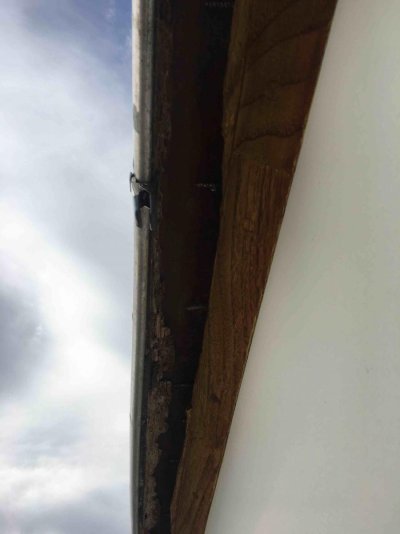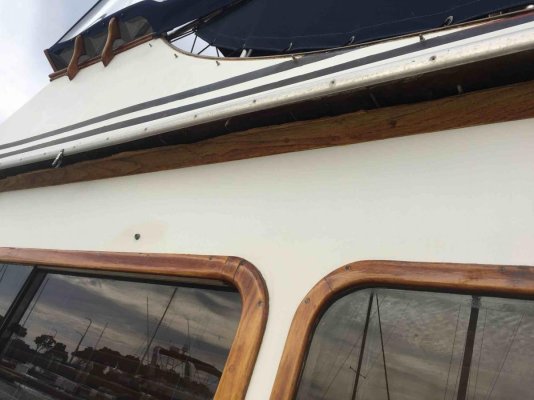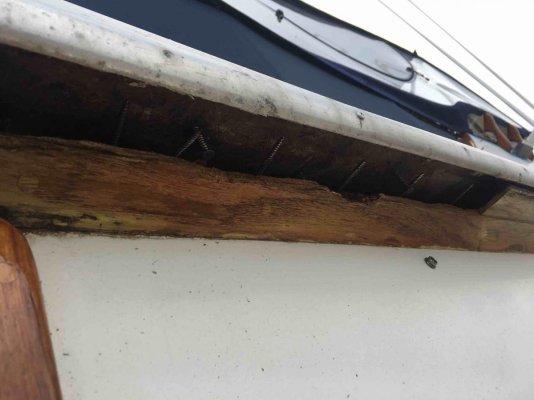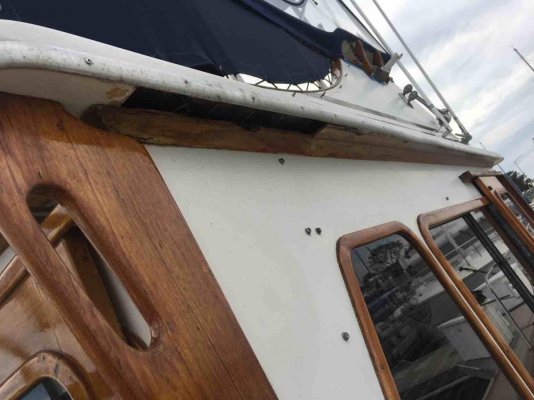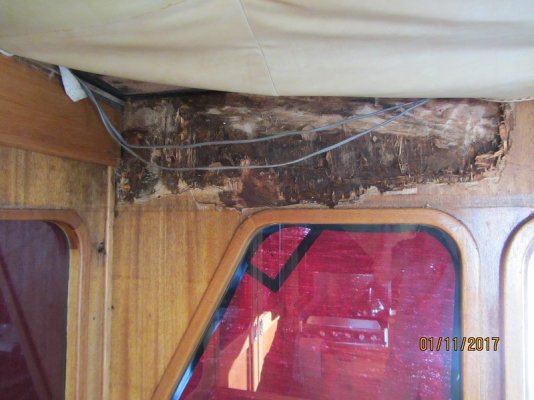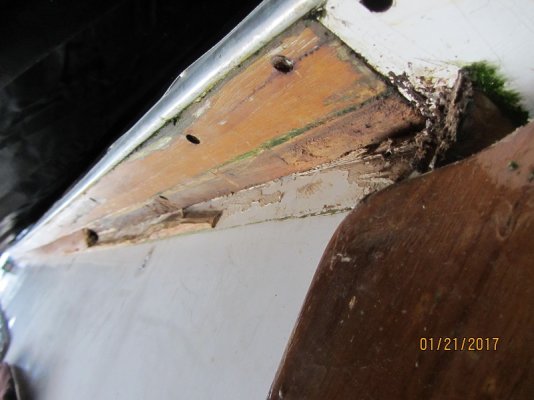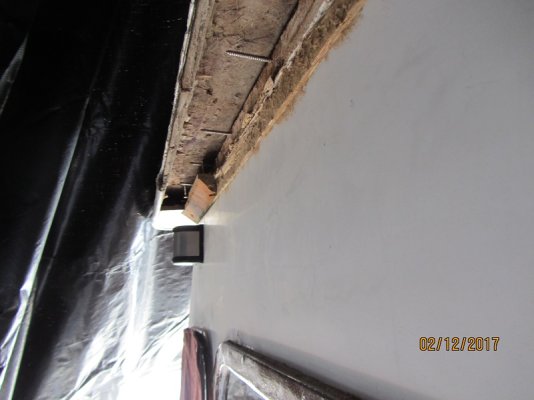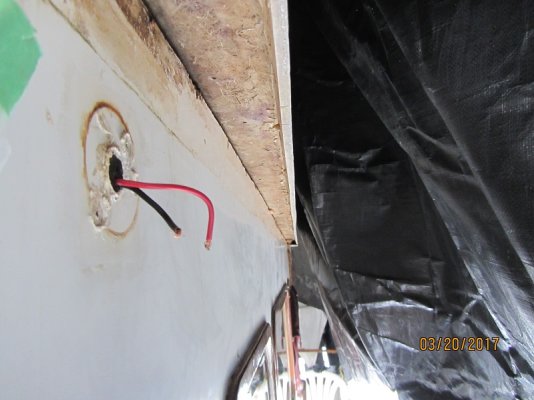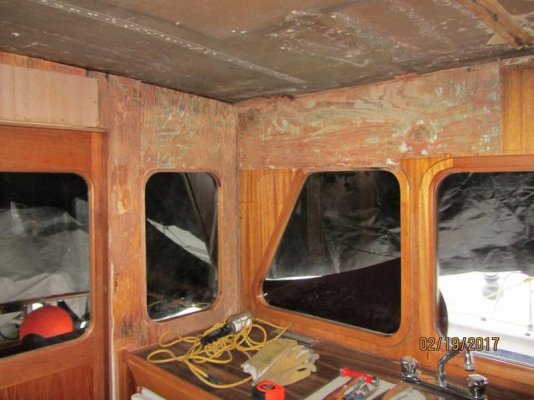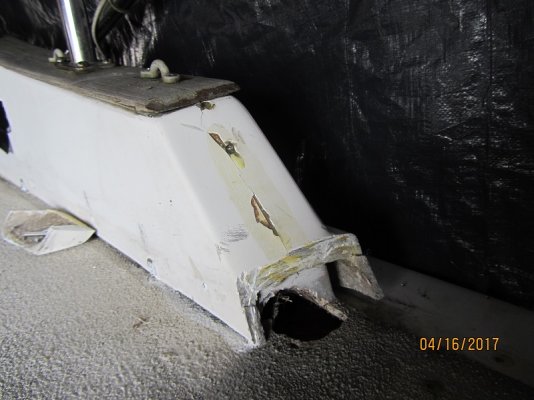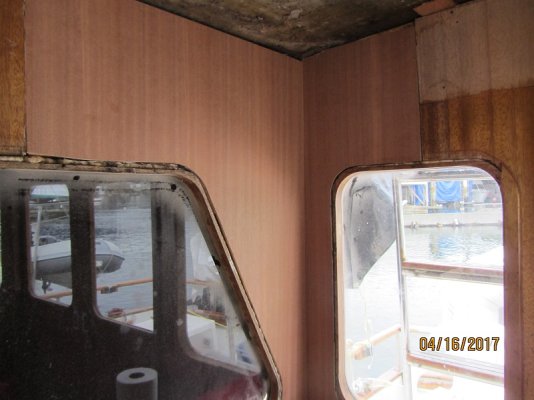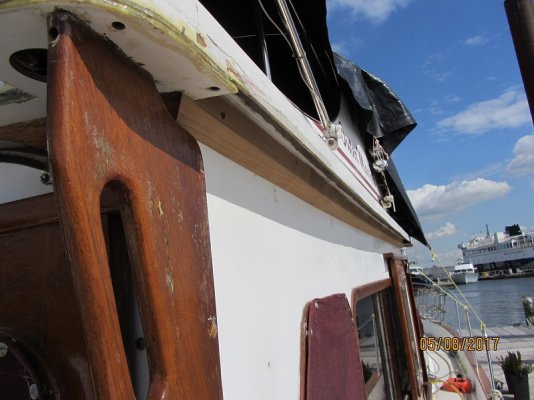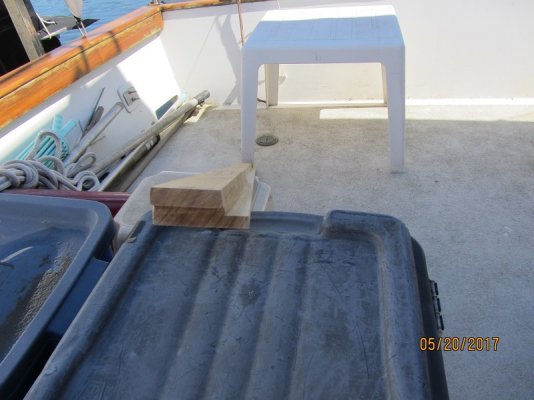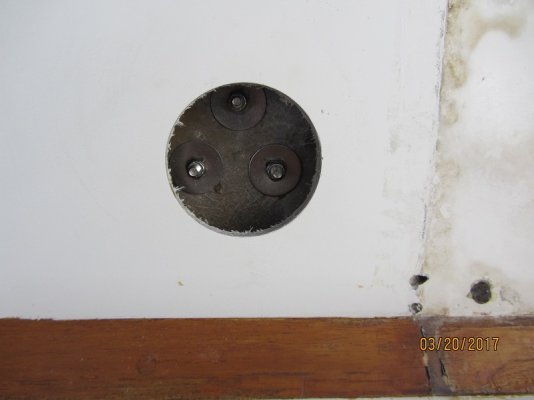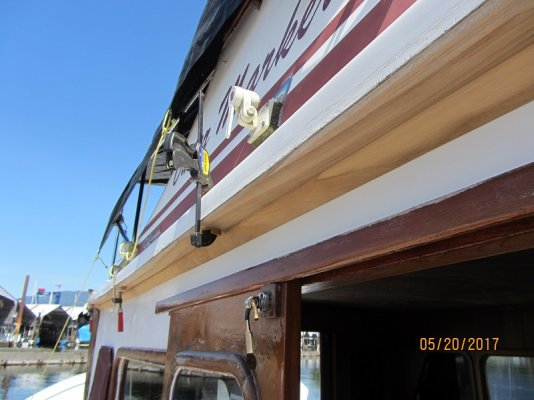I've been there!
I was just about to post this on a new thread but it is relevant to this one, so here are some thoughts and musings regarding soffit (overhang) dry rot and water leaks into the LRC 34 Californian cabin. My wife noticed that there was rot in the bottom of our stbd aft overhead cabinet in the cabin. No problem I thought – I’ll just remove the cabinet, replace the bottom, and reinstall it. Well as usual this simple job turned into six months of work, which tested my patience on more than one occasion. Upon closer inspection I found rot on both sides of the interior in the upper aft side and rear walls, and the header over the rear doors. On the exterior the lateral wood soffits showed signs of water leaks and some rot. This all pointed to ingress through the cabin roof (bridge deck) which was frustrating as both the surveyor and I missed it, and one of the attractive factors in our purchase of Outer Marker was that she was a “dry boat”.
It turns out there were several areas of water ingress:
1) Fasteners through the deck, for seats, freezer retainer, etc. had insufficient caulking or it had aged and failed.
2) Fasteners (screws) securing the bridge shroud to the deck/roof were loose.
3) Rail stanchion bottoms were another entry point. Our bimini was riveted (i.e. a non water tight fastening system) to the rails, which would fill with rainwater, where the rails terminate (on either side of the bridge ladder) there was a hole in the bottom middle of the fastening plate. The bimini acted like a wing in the wind and would put a fair amount of stress on the fasteners (screws) which loosened and water in the rails leaked into the screw holes.
4) On the exterior the caulking on the aluminum trim around the bridge failed (it was probably due after 36 years of service) and water entered into the soffit (overhang) system and rotted the soffits, it also allowed water to flow down to the rear where it would enter the cabin. Rotten soffits have been noted by others in the forum and is discussed by Duvie. This is perhaps the most serious issue because the soffit system is structural and secures the bridge deck to the cabin walls. Note the large number of 3” screws used to secure everything together.
5) The final issue was a little more tricky. I had repaired all of the above, and after a rain storm there was still water entry through the roof – arg! I traced it to the aft “heel” of the bridge cowling. The only way to access it was to remove the bridge cowling (which I seriously thought about) or saw off the heel. I ended up sawing off the heel and found that way back 36 years ago when the bridge deck was removed from its mould it did not release properly in this area and there was a patch of filler which had failed (I popped it out with a screwdriver).
Solutions:
We stripped the interior, upper cabinets came out, and the head liner was removed, tarps put up and heaters turned on. All of the rotten wood had to be removed and replaced with new. The skin of the ribbon mahogany plywood was ok but the underlying ¾ plywood had some serious rot. I removed the interior plywood using a dremel multi-tool (now one of my favourite tools), wood scrapers, and sanders. Removing the soffit was completely frustrating. Although some of the butyl caulking had failed some had not and it was very difficult to remove. I used saws, knives, chisels and a heat gun to remove the remaining wood and caulking.
After all the rot was removed I filled holes in the roof/deck with cold cure epoxy (due to winter temperatures). All screws were replaced and recaulked. I replaced the interior plywood with ¾ marine grade and, surprisingly, ¼” ribbon mahogany was available from our local plywood store. I used fiberglass resin thickened with cabosil to attach the plywood and repair sections of the header.
I used a hole saw to cut out the fiberglass soffit below the stanchions and bolted them in using fender washers as backing plates. I figure that I can cover the holes with LED lights. I also drilled drain holes at the bottom outside of the rails.
I redesigned the soffits according to the attached figure. I ended up using 2 solid teak pieces rather than 3 wood pieces used in the original design and constructed trim from tempered aluminum square tubing One of the problems with the original design was that the rubrail/trim screws separated the teak/fir allowing more water ingress. And finally I replaced the bottom of the upper cabinet. I know this is a fairly rushed diatribe, if anyone has questions or wants more detail feel free to contact me. I have provided some diagrams and pictures but have lots more!

